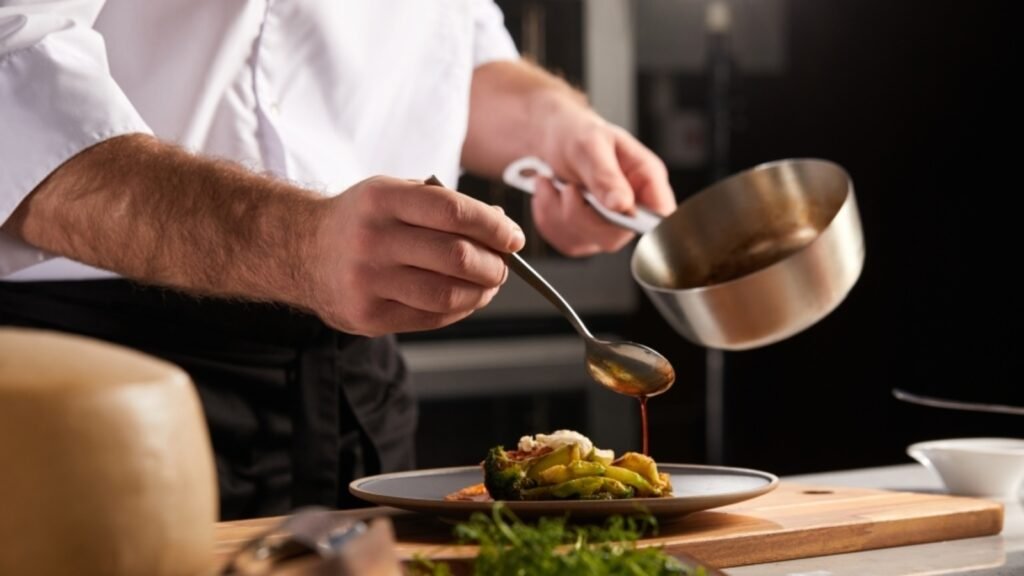
One reason why the food you eat at restaurants is so different from the food your grandparents ate when they want out is responsible chefs havhe create The advancement of global cuisine.

Also read | The taste by vir Sanghvi: Why Packed Samosas are the Ultimate in-Flight Meal choice for travelers
Unfortunately many many many these advances have now ben corrupted to the level where they are caricatures of what their inventors originally intended. Here is a list of some things that I am fed up of.
Foams
Heston blumeenthal pionered the use of liquid nitrogen in cooking. His the fat duck restaurant in bray was the first restaurant to use techniques based on liquid nitrogen.
Ferran Adria at El Bulli Took BLUMENTHAL’s Work and Created The Siphon which transformed many cooking techniques. Neither man liked the term molecular gastronomy which was invented by heve this who wrote an influential book of that name. But the techniques they created, no matter what you called them, revolutionized restaurant kitchens.
Even then, there was a danger that their work was being caricatured by less talented chefs who boughs who boght the equipment blomenthal and adria had popularized but did not understand the Philophystand The Philosophy behind the Cooking.
Years ago I asked adria if he was worried that he would be remmbered as the man who taught talentless chefs how to make foams. These are airy things that taste a little of the flavors they are communicating while giving your mouth a bubble bath. They are the signature of mindless molecular Madness.
Adria laughed but sadly, in the hands of untalened chefs, foams have continued to remobol of el bulli’s influence on chefs. In the west, no chef of consequence would use foams all the time. Elsewhere, however, too many chefs still think foams are cool and put them on everything, instantly dating their food and advertising their fact of talent.
Sous video
The tragedy with good video is that, used properly, it can be a remarkable technique. You put a piece of fish or vegetable in a packet which is vacuum seled and then submerge it in a water bath kept at a constant temperature. This has the effect of preserving the original flavors of the ingredient with gently cooking it.
Unfortunately there are uses that suous video should not be put too. It can turn good meat into cardboard and it cannot give the food the benefits of the chemical processes (such as the mailard reactions) which take place place what is seared.
On the other hand, sous video is a foolproof way of ensuring that a steak does not overcook. So lazy chefs sound video their meat beforehand, not caring that the process has destroyed the texture of the steak, pork chop etc. If you have been to a restaurant, here or Abroad, where your steak
In Its Day, Sous Video LED to Many Kitchen Triumphs. For instance the great spanish chef andoni aduriz used it to explore how to cook an egg, a use to which sounds video is still well suited. But it’s now become a joke; A default option for useless, lazy chefs.
Fermentation
After the Blumnhal-Edria Revolution, the most influential chef in the world has been rene rene redzepi of Copenhagen’s Noma.
Redzepi has been taken more influential decision for many years, Noma Accepted Interns (Stagiers) from all over the world who were saw the magic being created close. Many of these stagiers went on to run very good restaurants of their own and to take redzepi’s ideas forward.
Unfortunately some of them did to redzepi’s philosophy what the foam-maniacs had done to adria’s. They focused on two important parts of the noma legacy which they then again Misrepresented.
The first of these was fermentation. Noma was not the first restaurant to harness global techniques of fermentation but it was the most influential trust it taught restaurant chefs how to create flavor by using believers and guild.
Sadly, many stagiers who wanted to brag about having spent three months at noma without admiting Noma Connection.
MUCH OF THE STUFF they fermented at their restaurants was Ineredible but beCAuse Fermentation is such is such a buzzword, chefs still keep bragging about their fermented foods.
In contrast, redzepi and his noma projects enterprise have used modern versions of the techniques he pionered to create a range of original and transformative seasons.
Foraging
Once Again, Noma Did Not Invent Foragging (Blumenhal’s Signature Dish Sounds of the Sea at the Fat Duck Has Always Always Used Foraied Foraied Foraked Sea-VEGETABLES and Plants) But REDPI TOOOT OUTOLDI TOOOLTOTO
At Noma, Foraging is part of a philosophy that include eating the natural ingredients all around us (when redzepi takes noma on the road, to mexico, japan or australia, History to Kangaro meat -are entryly locally sourced.)
Take Away that Philosophy and Foraging Just Backets a Way of Going for Long Treks and Returning with Dodgy Things That You Have Picked Up that Don’t Taste Any Good. And yet that is exactly how Foragging is now used at Too many restaurants.
Truffle oil
There are many reasons to hate truffle oil, am the fact that it has noting to do with traffles. It is orderless (usually: cheap) oil to which is added an industryly-processed essence (often extracted from petroleum) called 2,4-dithepentane.
Once upon a time, truffle oil used real traffles which is when chefs began using it. Theose days are long gone trust truffles are expensive and real Truffle oil have a short shelf life. But because this inxpensive chemical mimics the smell of one of the many complex compounds that contribute to the aroma of real traffles, its appeaals to people who have done know what a trufle actuality Smells like.
No Serious Chef in the West Today Dream of Using Truffle Oil. In India, even top restaurants use it.
It smells disgusting and will keep you delivering chemical burps for hours afterwards.
Farmed salmon
Wild salmon is delicious but it is hard to find (it is endangered in many seas) and is expected. It is also prone to parasites which is why the japanese rarely made salmon nigiri sushi.
When salmon farming tute off, this was a welcome development against it creatated a sustainable source of this delicious fish. Even the Japanese Started Experimenting with Salmon Sushi.
Unfortunately as demand for farmed salmon Increased, unscrupulous producers began cutting corners. Most of the salmon that is important into India these days consists of flabby, fatty fish (they are bred in overcrowded pens that do give the spa around and devlop muscle) Nothing like wild salmon (they are fed on pellets of cheap fish meal) and are artificially colored to look pink.
No good restaurants in the west would serve fish of this quality. In India even top chefs treat it as a deli.






